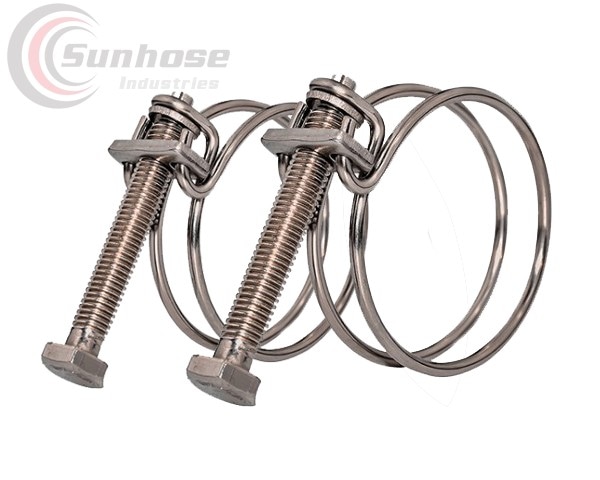Wire hose clamps are a type of clamp used to secure hoses onto pipes or other fittings. They are often used in automotive and industrial applications, where hoses are used to transfer fluids or gases. Wire hose clamps are made from a thin wire that is bent into a circular shape and tightened around the hose using a screw or bolt.

Double wire bolt hose clamp
There are two main types of wire hose clamps: worm gear and spring clamp.
Worm gear hose clamps are the most common type and consist of a metal band with a screw attached. The band is wrapped around the hose and tightened by turning the screw with a screwdriver or wrench.
Spring clamps, on the other hand, have a spring-like design that allows them to be quickly and easily installed without the use of tools. They are commonly used in automotive applications, such as securing radiator hoses.
Wire hose clamps have several advantages over other types of hose clamps. They are relatively inexpensive and easy to install, making them a popular choice for many applications. They are also reusable, which means they can be removed and reinstalled as needed. Additionally, wire hose clamps provide a secure and tight seal, which helps prevent leaks and other issues.
However, there are also some disadvantages to using wire hose clamps. One potential issue is that they can over-tighten and damage the hose, particularly if too much force is used when tightening the screw or bolt. Additionally, wire hose clamps may not be as secure as other types of clamps, such as bolt clamps, which can be a concern in high-pressure applications.
To ensure that wire hose clamps are installed correctly and securely, it is important to follow the manufacturer’s instructions and to use the appropriate size clamp for the hose being used. It is also a good idea to periodically check the clamps to make sure they are still tight and in good condition.
In summary, wire hose clamps are a popular and cost-effective option for securing hoses in automotive and industrial applications. They are easy to install and provide a secure seal, but care should be taken to avoid over-tightening and to use the appropriate size clamp for the hose being used.

 sunhose
sunhose Sunhose
Sunhose